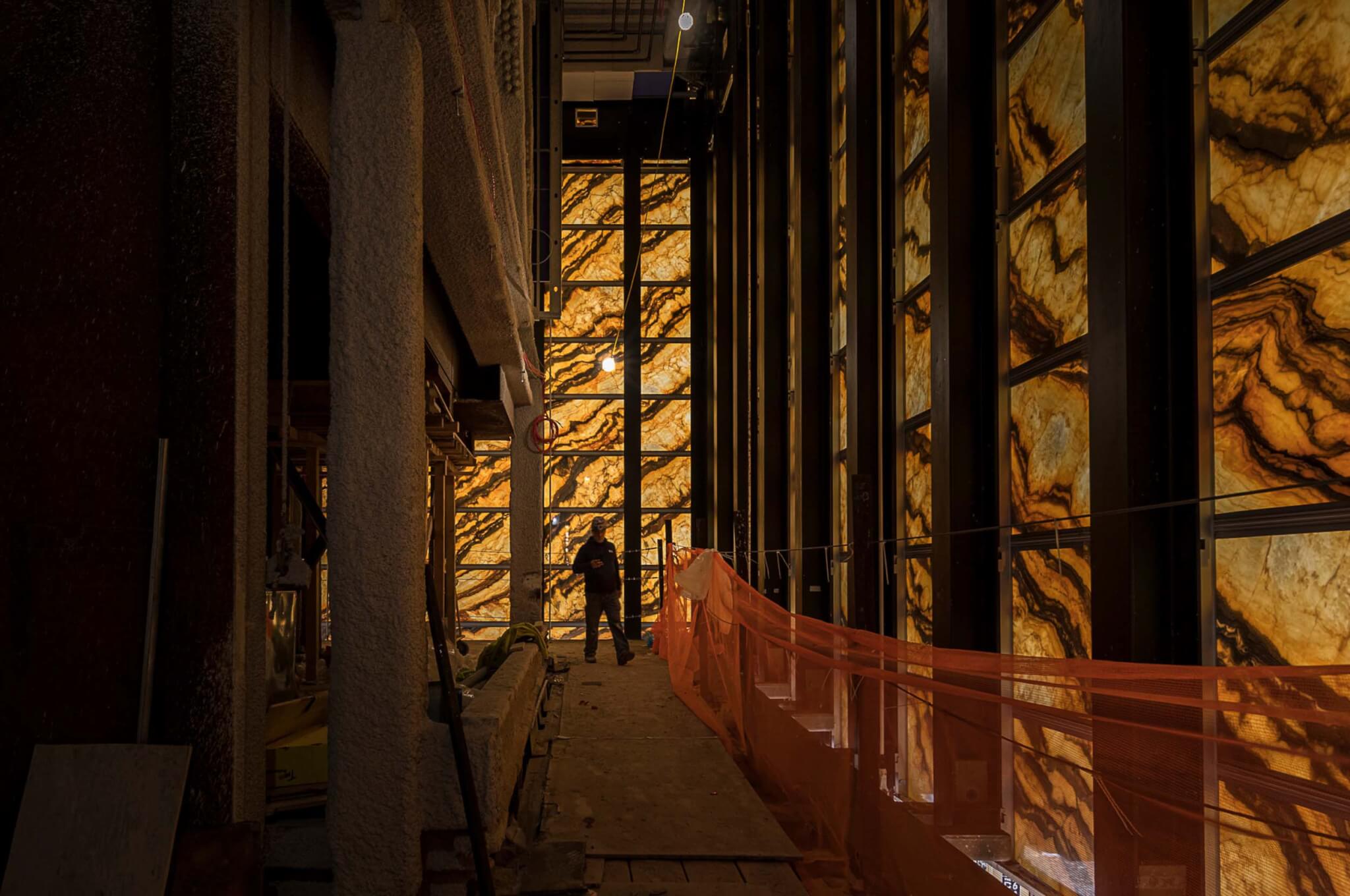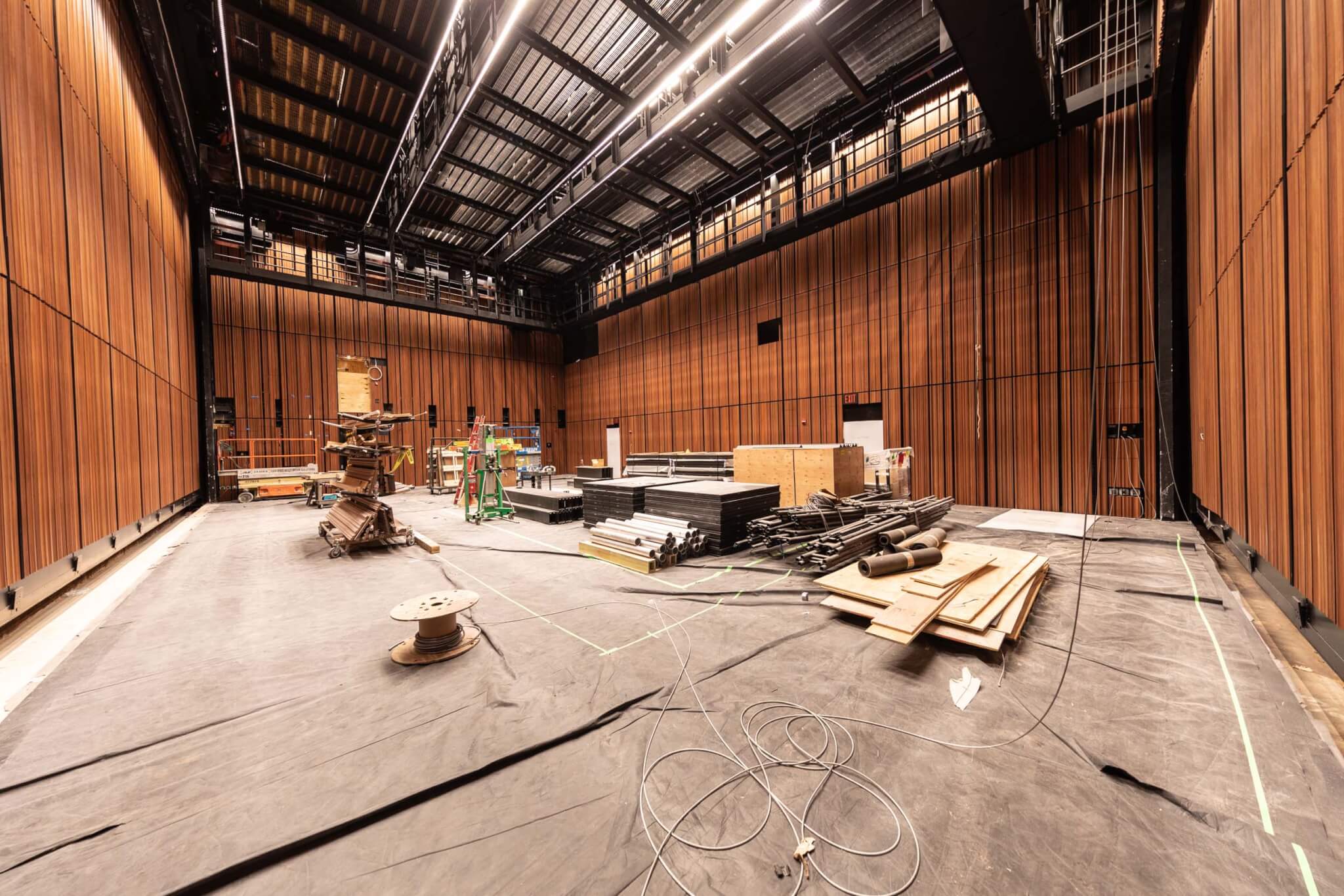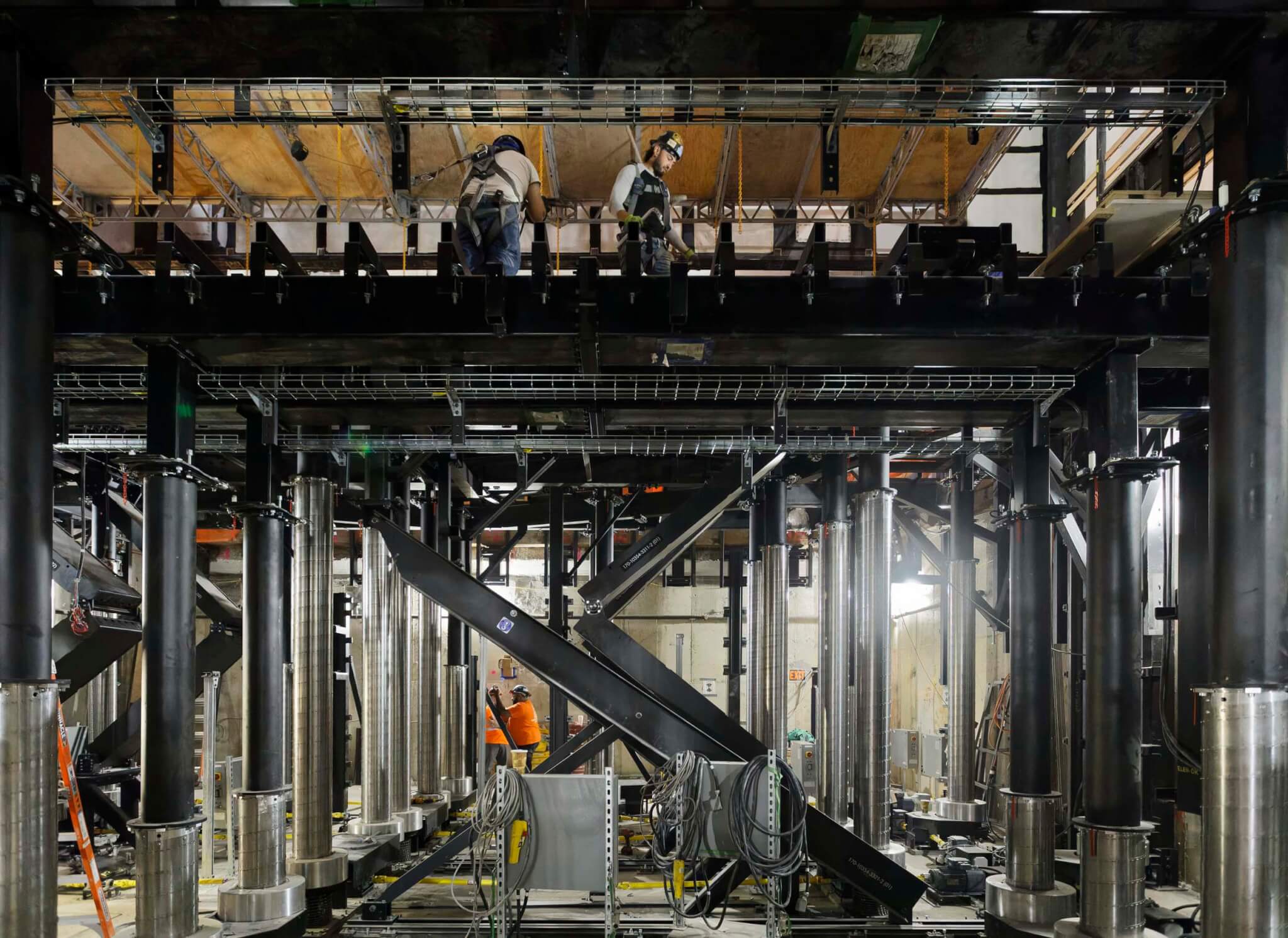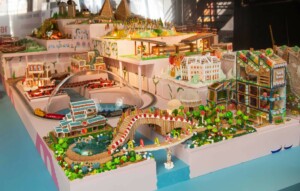REX’s Ronald O. Perelman Performing Arts Center is scheduled to open in September. The effort, nearly 20 years in the making, will add a venue for music, theater, dance, chamber opera, film, and other events adjacent to One World Trade Center and the 9/11 Memorial & Museum. The complex is the final element to be realized in the rebuilding of the 16-acre World Trade Center site.
The arts facility sits atop an infrastructural plinth managed by the Port Authority of New York and New Jersey that vents subterranean operations like the PATH train station below. Much of the project’s complexity comes from navigating where new structure could be located. An initial Public Level features interiors designed by David Rockwell’s Rockwell Group, including the John C. Whitehead Lobby, the Clare and Vartan Gregorian Lobby Stage (to be programmed with free events), bar, and the Dalio Family Terrace. A restaurant, also designed by Rockwell Group, will support an original concept by Ethiopian-Swedish chef Marcus Samuelsson. The ambition is for the space to serve as an “anchor for the Lower Manhattan community,” according to press materials.

The project was first awarded to Gehry Partners and Snøhetta in 2004, but following the exit of theater stakeholders, the commission passed to REX and Davis Brody Bond. The team’s design was revealed in 2016. While construction on the upper portion began in 2019, work on the base commenced in 2017. Early estimates for completion targeted 2020, but the timeline was beset with delays. The effort was initially projected to cost $250 million, but when completed, the bill will run to $500 million. In 2018, the complex received an $89 million grant from the Lower Manhattan Development Corporation and the U.S. Department of Housing and Urban Development.
The center is named for philanthropist (and Trump donor) Ronald O. Perelman, who contributed $75 million to the project. It’s fortunate that the gift was secured prior to the businessman’s recent financial plight: In 2021, Princeton University announced a building would no longer be named for Perelman after he didn’t meet the payment schedule for the $65 million sum originally promised for a new residential college.
In late February, a press tour led by Joshua Ramus showcased the current state of Perelman’s slick stone prism. A who’s-who of the architectural press donned hi-viz vests and white hard hats to scope out what lay behind the marble curtain, while Ramus was decked out in all black, up to his helmet.

Sartorial notes aside, the tour did not disappoint. For both aesthetic and egress-related code reasons, the perimeter of the main floor is ringed in an 8-foot-wide walkway set against the facade. Lighting elements, designed with Tillotson Design Associates, hang in the tall slot of space overhead. Already, the glow through the marble-glass facade is warm and gooey, even on a winter afternoon with indirect sun. The modernist feat summons Gordon Bunshaft’s Beinecke Rare Book and Manuscript Library at Yale University or a flight of Loosian fantasy. The effect, like the facade itself, is mesmerizing.

The PAC’s design unites REX’s expertise in flexible theaters with its penchant for inventive facades. As presented by Ramus at Facades+ New York last year and previously covered in AN, the salt lamp–like exterior is faced in four nearly identical elevations of bilaterally bookmatched marble layered atop an insulating glass unit and finished with an outer layer of glass. The panels are ganged together in fours and installed as “megapanels”; Ramus described the system as paradoxically “semiunitized.” The units are hung on backing steel supports, which are themselves suspended from an overhead truss. It is a true curtain wall, in that the top attachments are pinned, while the bottom is free to move as the materials could expand and contract across the full height of the system due to weather. (Ramus also said the facade was designed to absorb “energy,” in case an act of violence was again perpetrated nearby.) The feat was realized with facade specialist Front, who also worked with REX on the tubular cladding of the (very reconfigurable) Dee and Charles Wyly Theatre in Dallas. While the PAC’s original vision saw the entire exterior clad in marble, now the mechanical base is lined in a dark rectangular panel that matches the sliced stone above.
Inside the cubic fortress, the Play Level’s three theaters, realized with theater consultant CharcoalBlue and acoustician Threshold Acoustics, can be reconfigured to meet the visions of the artists: The John E. Zuccotti Theater can seat up to 450 people, the Mike Nichols Theater up to 250, and the Doris Duke Theater up to 99. When combined with the two scene docks and the rehearsal room, there are ten different proportions of venue geometries, more than 50 stage-audience arrangements, and seating from for 90 to 950 attendees.

In press materials, Ramus shared: “Responding to the sanctity of the World Trade Center site and the humanistic aspirations of the PAC’s mission, our design empowers artistic teams to imagine and create a vast range of performances and audience experiences, within a building that addresses its setting with respect and warmth.”
AN will follow up with a full review when the complex opens later this year.











